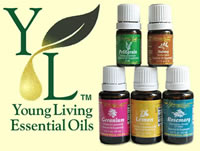Difference between Essence and Essential Oil
Key difference: Essential oils are a “concentrated hydrophobic liquid containing volatile aroma compounds from plants.” Essential oils are effectively oils that carry the essence of the ingredient they are cultivated from. Essence is a flavoring ingredient, mainly used in a number of recipes to give them the flavoring and/or aroma of the original ingredient. While referring to food ingredients, an essence can have two distinct meanings. It can either be an imitation extract or it can be a highly concentrated form of pure extract; the label on the bottle should specify which.
 Essential oils are a “concentrated hydrophobic liquid containing volatile aroma compounds from plants.” Essential oils are also known as volatile oils, ethereal oils, aetherolea, or the “oil of …”
Essential oils are a “concentrated hydrophobic liquid containing volatile aroma compounds from plants.” Essential oils are also known as volatile oils, ethereal oils, aetherolea, or the “oil of …”
Essential oils are effectively oils that carry the essence of the ingredient they are cultivated from. They are often extracted by the process of distillation; however, many may be extracted through expression or solvent extraction.
The most common essential oils, including lavender, peppermint, and eucalyptus are extracted through the process of distillation. This requires the raw plant material to be into an alembic over water. An alembic is a type of distillation apparatus. The raw plant material may include any and/or all of following parts: the flowers, leaves, wood, bark, roots, seeds, or peel of the original ingredient. In the alembic, the steam, which is created as the water heats, passes through the plant material. This leads to the vaporization of the volatile compounds. The vapors then flow through a coil, where they condense back to liquid. This liquid is then collected, packaged and sold.
Essential oils have a variety of uses today. It is often used for medical, pharmacological, or culinary purpose. They are commonly used for flavoring food and drinks.
Essential oils are also used for adding scents to perfumes, cosmetics, soaps, incense, and various household cleaning products. Some claim that essential oils have medicinal properties that can be used from skin treatments to remedies for cancer. However, these claims are often made by practitioners of alternate medicine.
A popular branch of alternate medicine that often incorporates essential oils is aromatherapy. Practitioners of aromatherapy claim that essential oils and other aromatic compounds have curative effects. In aromatherapy, oils are often diluted and used in massage, diffused in the air, heated over a candle flame, or burned as incense.
Essence, on the other hand, is a flavoring ingredient, mainly used in a number of recipes to give them the flavoring and/or aroma of the original ingredient. Commonly available essences are of spices, nuts, herbs, fruits, some flowers, etc. The best known of these are essences of almond, cinnamon, cloves, ginger, lemon, nutmeg, orange, peppermint, pistachio, rose, spearmint, vanilla, violet, and wintergreen.
.jpg) According to Dictionary.com, an essence is “a substance obtained from a plant, drug, or the like, by distillation, infusion, etc., and containing its characteristic properties in concentrated form.” While referring to food ingredients, an essence can have two distinct meanings. It can either be an imitation extract or it can be a highly concentrated form of pure extract; the label on the bottle should specify which. Concentrated essences are essentially very strong extracts that can be twice to even four times as strong as normal extracts.
According to Dictionary.com, an essence is “a substance obtained from a plant, drug, or the like, by distillation, infusion, etc., and containing its characteristic properties in concentrated form.” While referring to food ingredients, an essence can have two distinct meanings. It can either be an imitation extract or it can be a highly concentrated form of pure extract; the label on the bottle should specify which. Concentrated essences are essentially very strong extracts that can be twice to even four times as strong as normal extracts.
Natural essences are obtained by extracting the essential oils from the blossoms, fruit, roots, and other parts of the plant or the whole plant. There are four main methods used to produce essences:
- Expression – when the oil is very plentiful and easily obtained, as in lemon peel.
- Absorption – generally accomplished by steeping in alcohol, as vanilla beans.
- Maceration – used to create smaller bits of the whole, as in making peppermint extract, etc.
- Distillation – used with maceration, but in many cases, it requires expert chemical knowledge and the erection of costly stills.
Imitation essences are chemically created substances that aim to replicate the flavor and/or taste of the original ingredient. These imitation essences usually do not have the delicacy of the natural flavor; however they provide a close enough alternative that is more convenient then actual ingredients or extracts, especially when the ingredients or extracts are not easily available or are too expensive.
Still, many people find that imitation essences tend to have an artificially produced taste that does not match with the original taste of the ingredient or with pure extract. These people recommend using the ingredient, ingredient paste or pure extract, even though these tend to be quite expensive.
Moreover, at times imitation essences tend to be weaker than natural extracts. Hence, many people recommend doubling the amount of imitation essence used as opposed to extract.
Image Courtesy: essentialoilsforhealing.com, hopshop.co.uk









Add new comment